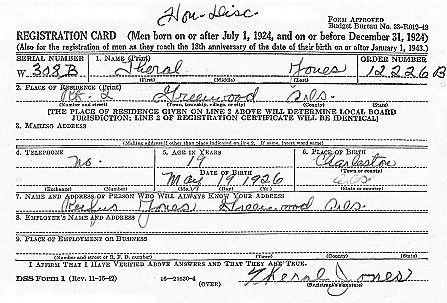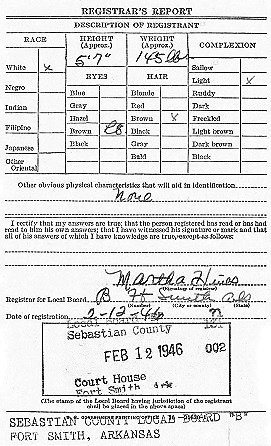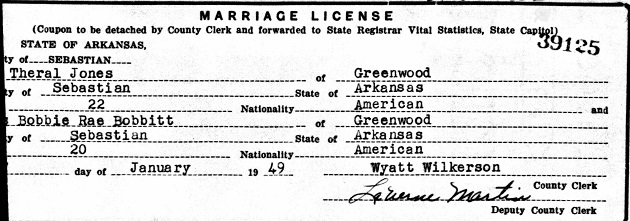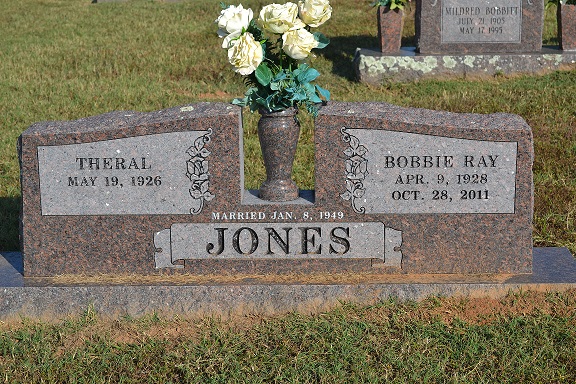Theral Jones
1926-2017
Theral "Charlie" Jones was born May 19, 1926 in Bates Township, Sebastian Co., Ar. to
Rufus Martin & Ethel Elizabeth Webb Jones. January 8, 1949 Theral married
Bobbie Rae Bobbit, both of Greenwood, Sebastian Co., Ar.
Theral registered for the miitary draft February 12, 1946 at the
Fort Smith, Sebastian Co., Ar. court house. He served in the US Navy.
Theral Jones passed away May 7, 2017 at Fort Smith, Sebastian Co. Arkansas,
Burial was in Gilliam Cemetery at Witcherville, Sebastian County, Ar,



US Navy Support Books
1901-1902, 1917-2010
Similar to Navy cruise books, Navy support books are "yearbooks"
for Navy units that
cover an operational deployment, training group, base,
or similar group or institution
"US Naval Construction Battalion No. 18 Special"

The Battle of Tinian was a battle of the Pacific campaign of World War II, fought on the
island of Tinian in the
Mariana Islands from 24 July until 1 August 1944. The 4th Marine Division landed on 24 July 1944, supported by naval
bombardment and marine artillery firing across the strait from Saipan. With the help of Seabee ingenuity the Marines
were able to land along the Northwest coast with its two small beaches and low coral. The rest of the island had coral
cliffs up to 15 feet (4.6 m) high at the water's edge negating any assault plans. Commodore Paul J. Halloran (CEC) Seebee
theater commander provided drawings of a conceptual landing ramp for the 18th and 121st Construction Battalions to fabricate.
To construct these ramps, the plans called for the Seebees to mount steel beams salvaged from Saipan's abandoned sugar
mill on LVT-2s. If they worked they would allow the Marines to outflank Tinian's prepared defenses. General Harry Schmidt
was skeptical and ordered that the ramps be put through a 100-vehicle use test. The Seabee creation was named a Doodlebug.
It worked exactly as the Marines had hoped.A successful feint for the major settlement of Tinian Town diverted defenders
from the actual landing site on the north of the island. The feint withstood a series of night counterattacks supported
by tanks and the 2nd Marine Division landed the next day.
One of the "Satan" M3 Stuarts brought over from Saipan.
Another piece of Seabee handiwork was brought across from Saipan: the 24 "Satan" mechanized flamethrowers that General
Holland Smith USMC had requested from the Army's CWS Flame Tank Group in Hawaii. The terrain on Tinian was much more
conducive to their use than Saipan. Saipan and Tinian served as a training grounds for the tank crews and proving
grounds for the Marine Corps.
The weather worsened on 28 July, damaging the pontoon causeways and interrupting the unloading of supplies. By
29 July, the Americans had captured half the island, and on 30 July, the 4th Marine Division occupied Tinian Town and Airfield No. 4.[
Japanese remnants made a final stand in the caves and ravines of a limestone ridge on the south portion of the island, making probes
and counterattacks into the Marine line. Resistance continued through 3 August, with some civilians murdered by the Japanese.

|
|
|
|